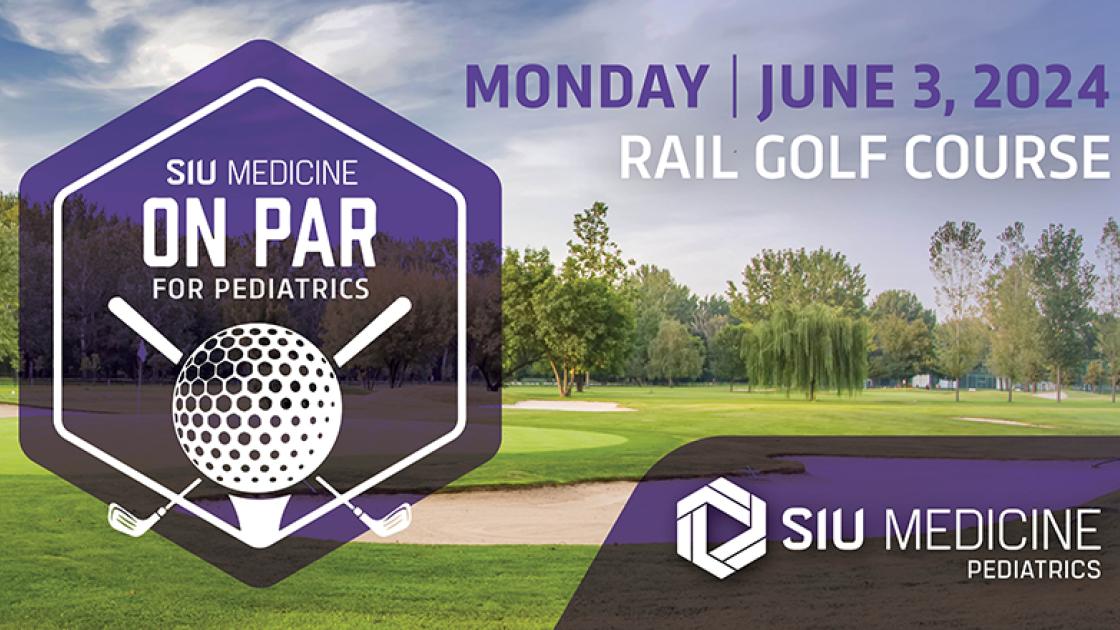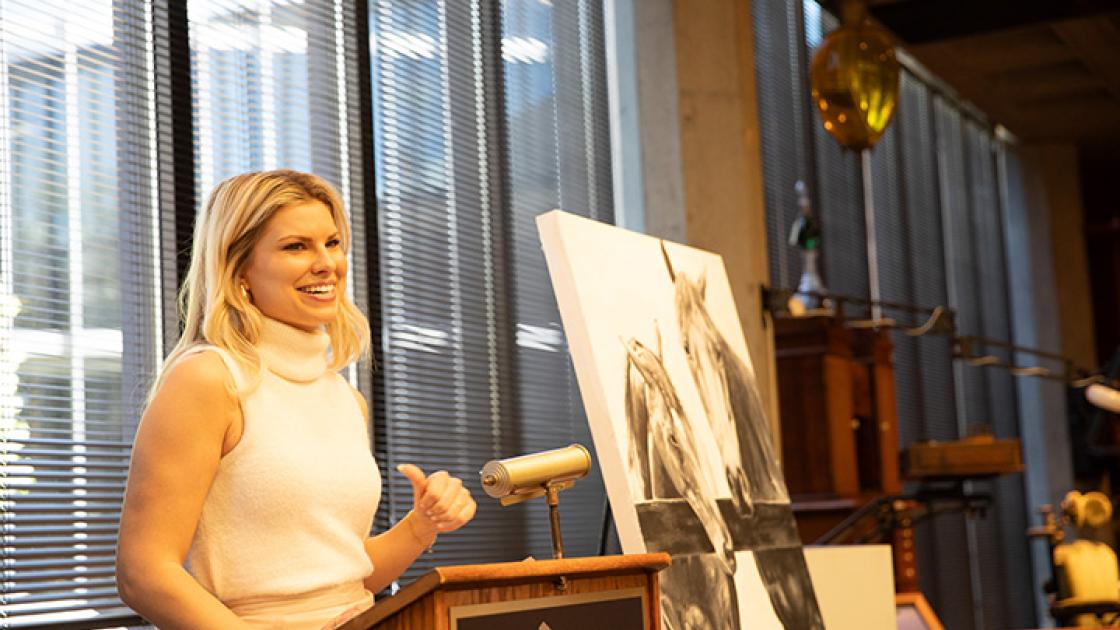Pandemic tests grit of health care workforce, support systems for physician burnout
Last March, Vidya Sundareshan, MD, was on her first family vacation in more than a year, traveling to San Antonio, Tx., to attend her brother’s wedding. Sundareshan had been named co-chief of the SIU Department of Internal Medicine’s Division of Infectious Diseases (with colleague Vidhya Prakash, MD) on March 1.
The trip was a welcome break and an opportunity to tend to her own needs as a busy physician. However, her vibrating phone kept reminding her that multiple health care systems were preparing for the inevitable. The coronavirus outbreak that had been an overseas occurrence before the holidays had gone global, sending public health teams into overdrive.
On March 9, she and her family returned to Illinois. Hours later she was attending a joint meeting of officials from the five groups in the Mid-Illinois Medical District: SIU School of Medicine, Memorial Health System, HSHS St. John’s Hospital, Springfield Clinic and the Sangamon County Department of Public Health, where Sundareshan has been medical advisor since 2012.
Dr. Sundareshan would work the next four months without a day off.
As one of the region’s top infectious disease specialists, her knowledge and counsel were critical to preparing for the myriad of ways COVID could do harm. The long hours and stress she was about to experience would be relentless. But her experiences would not be unique.
Even as the pandemic stretches into its second year and vaccines are being deployed to turn the tide, fatigue and burnout are real concerns within health care. How we have adjusted and learned to cope with this new reality of constant burnout – one that weighs heavily on our physical, mental and economic health – is a study in resilience.
PROTECTION FEARS
Some SIU Medicine colleagues have lost family members and loved ones, some contracted the virus themselves. The danger and fear were ever-present.
Another hardship was the inability to allow a loved one to be at the bedside when a patient was especially ill and could die. “It was bad for each family and it was bad for us, as physicians,” says Christopher McDowell, MD, endowed chair of SIU’s Department of Emergency Medicine. “You felt like you weren’t able to do your level best for them at that critical time. That was devastating.”
The fear of acquiring COVID and giving it to family members, loved ones or colleagues was common across campus. Dr. Sundareshan is part of a dual-physician family. Her husband is a critical care provider, so both had worries about being in contact with their children after returning home from work. There were 14-day stretches when her husband was exiled to the basement as a precaution.
Mary Stewart, chief operating officer at SIU Medicine, worried that she could bring something harmful home to her husband, and was forced to keep others at a distance. “It’s definitely made me appreciate my family more than I already did,” she says. “Not being able to see your own kids and grandkids was really hard. Facetime and Zoom are great, but it’s not the same as being able to hug them.”
SUPPORT SYSTEMS
SIU School of Medicine launched the Center for Human and Organizational Potential (cHOP) in 2019 to enhance the institution’s work environment and focus on employee advancement and wellness. When the pandemic struck in 2020, it provided an unexpected proof of concept for the center’s necessity. Susan Hingle, MD, associate dean of cHOP, had assembled the team that was now tasked with meeting the evolving, unprecedented demands of the pandemic.
Its members initially focused on ways to sustain connections across remote workspaces. Colleagues were trying to do their jobs from home, or were staffing frontline positions that generated a different type of anxiety. They began training supervisors for new dynamics that better managed scattered team members. And they shared personal stories from SIU staff in a newsletter and on the school’s intranet to give voice to many communal concerns.
Hingle says, “The pandemic made a lot of things related to well-being difficult. There was so much change. Protocols were constantly shifting. Human beings like to be in control and it made planning hard. We were glad we’d had a year to work together, meet with everyone and get our feet underneath us.”
Mental health studies indicate existing in crisis mode can lead to fatigue, depression and burnout. With COVID grinding on, experts worry that providers will shun necessary mental health care for fear of harming their reputations or ruining their careers.
SIU Medicine participated in an American Medical Association Caregivers Survey conducted over 6 months in 2020 that showed the scope of the nationwide problem. The fear of exposure to COVID-19 was high (62%). More than a third of those surveyed in the 85 health care organizations said they’d experienced symptoms of anxiety and depression as the result of the pandemic. Over half reported some symptoms of burnout.
Dr. Hingle says the medical school’s numbers were comparable to the national response, understandably.
We were told to sprint, and then to run a marathon, and in truth we don’t know where the finish line is. It’s now an ultramarathon.
The pressures and uncertainty impacted learners as well. Rukmini Roy, MS4, says, the pandemic’s stress was wildly different than the medical school anxieties that had come before. “Our future careers were at stake. It was difficult to accept that away rotations were canceled, classes and interviews would be virtual, hospitals were at capacity, and no one had any idea when this all would end.”
Compassion and empathy from those at the top was essential. The men and women in SIU leadership had decades of clinical experience to draw upon as they assessed the needs of students and staff in the shifting environment. Dean Jerry Kruse, MD, MSPH, Harald Lausen, DO, chief medical officer, and Stewart acknowledged the dangers and made efforts to relieve stress and reinforce safety throughout the organization. They redeployed some physicians and employees in new positions to supplement offices that were short-staffed.
They also recognized the additional needs of team members who had children learning at home while also working virtually. Flex-time and child-care options were expanded as the summer months began.
WORN OUT, BURNT OUT
For some, the measures were not enough.
Sacharitha Bowers, MD, assistant professor in dermatology, says a confluence of factors brought her down. The complexities of balancing multiple workloads — program duties, moving schedules, long hours, and keeping up with COVID literature — “felt like 150 percent.”
As the challenges of improvising at work became constant, a national upheaval in the wake of the deaths of George Floyd and Breonna Taylor seemed to amplify the trauma. Bowers channeled some of her energy into racial equity activities that made her feel better, temporarily. Social media also provided both an outlet and a platform. “I wanted to empower others who may have been feeling similar angst and were afraid to express it,” she says.
But by the fall her tank was empty.
“It was a very tough year,” she says. “I’m a big proponent of well-being, but there has to be some space in your schedule to let it in. Every day was getting through the eight Zooms, the resident questions, the clinic work and then going home to take care of your children. We were in survival mode. There was negative space.”
She was experiencing burnout, a common problem among physicians.
Burnout was considered an epidemic before the pandemic. In the current era of electronic health records, managed care and increasingly complex systems and regulations, the problem has gained new prominence.
According to 2019 data from the Annals of Internal Medicine, burnout costs an estimated $4.6 billion annually in health care, adds to the worsening physician shortage, and correlates with negative patient outcomes.
There are a multitude of reasons for burnout. Many young people choose medicine because of an interest in science and the desire to help others. As these intrinsic motivators get eroded, it can lead to emotional and physical exhaustion and a sense of depersonalization.
Dr. Hingle has studied the problem, and cites other common factors: not feeling a connection to your work; workplace inefficiency / function (a primary care physician with a full-time clinic duty spends an average of two to three hours a day on documentation responsibilities, she says); the pay-to-play demand, when practices are based on the patient client load; and perfectionism.
“Physicians tend to go all-in on things and that is not always healthy, and it’s not sustainable,” says Hingle.
STRUGGLING IN SILENCE
There is also a self-imposed shroud of silence for fear of stigma. A recent report from the American College of Emergency Physicians found that 87% of emergency medicine doctors are experiencing more stress during the pandemic, and 57% say they would be concerned for their jobs if they sought mental health treatment. Hence many are not getting the help they need. Only 13% have sought treatment to address pandemic-related mental health concerns.
“If you’re struggling, you are often hesitant to say anything,” Hingle says. “It’s the biggest piece that we’re trying to figure out: how to get people to ask for help.”
Establishing the right culture is critical to talking about burnout and getting providers the proper care to begin healing themselves. Emergency medicine physician McDowell says his residency program takes a proactive approach to curb burnout, emphasizing the importance of finding a career niche or an interest beyond work as an outlet to help restore enthusiasm and the ability to relate to people.
We tell our residents there’s value in serving on a committee, or working outside the hospital, volunteering in the community. Find what your expertise can offer to another organization and lend it because you’ll get much more out of it in recharged batteries throughout your career.
The SIU School of Medicine Alumni Society board also is taking steps to combat workplace dissatisfaction. They have established a Physician Wellness Committee to explore ways to assist alumni, residents, fellows and students. In March 2021, a virtual presentation ‘Surviving Your Profession’ featured a trio of speakers — Drs. Michael Honan (’91), Loren Hughes (‘83) and Gwen Erkonen (’04) — discussing burnout, and ways in which physicians can recover when they feel their sense of purpose and joy waning.
Dr. Sundareshan made physician burnout the focus of her community press conference on November 22, 2020. “I wanted to help people actively look for it, recognize it, and call it out in their institutions.”
SIU Medicine’s support system could be a model, she says. “Dr. Hingle is great at keeping many of the people within our department afloat, checking in regularly and positively reinforcing the good parts of our jobs. She would share resources from the ACP [American College of Physicians] to combat the burnout we were all feeling.”
Identifying signs similar to post-traumatic stress disorder among physicians and staff as the pandemic winds down could help mitigate stress and burnout. But Hingle considers it half the battle. The goal isn’t simply to eliminate burnout, but to promote well-being. The ACP offered free counseling services to internal medicine physicians, she says, “but it was only utilized by a handful of people. So it’s not just about having the resources. It’s creating the culture where the people feel comfortable using them, with no stigma.”



